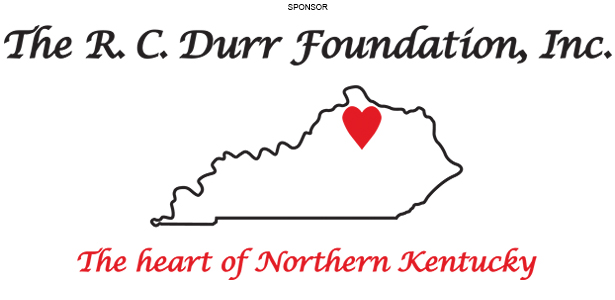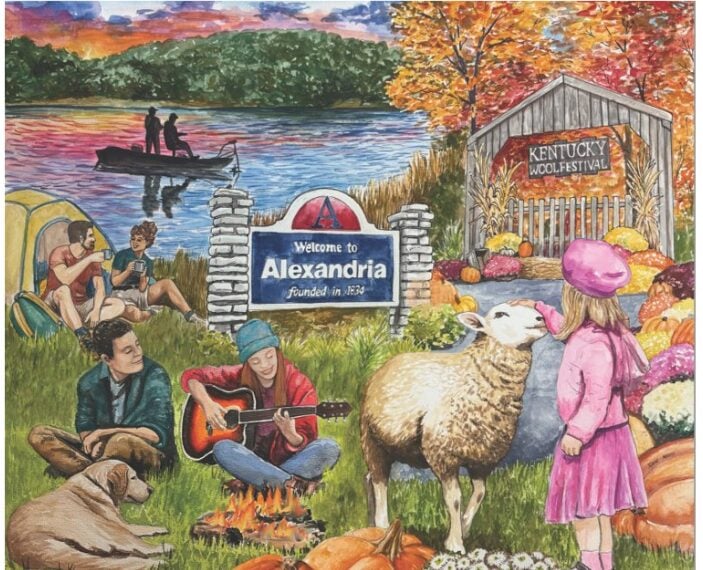By Howard Whiteman
Murray State University
It was an odd place for a hummingbird nest, but there it was. I typically think about such nests being ghosts, because this was the first (and only) one I had ever seen. They are so small and so well hidden in the tree canopy that humans never usually get a glimpse. But this one was in an average, everyday oak outside of a public pool, small and cryptic but easy to see once you knew it was there. What made me notice it was the two nestlings, which had outgrown the tiny nest and were fidgeting, ready to fledge.
Hummingbirds are unique in that they often build their nests with plant parts that they bind together with spider silk. I’ve watched them hover and collect webs, often after grabbing and eating the spider, and then flying off to their nests to add their spider glue. A little lichen or moss for camouflage, and a few feathers to help insulate the nest, and they are ready to lay eggs.

Bird nests are simply incredible, with some just as amazing as Spiderman-like hummingbirds. Wrens build nests out of small sticks, similar to bald eagles that use entire branches for their massive nests. Cavity nesters like bluebirds and woodpeckers use loose plant material, while some species like orioles weave elaborate, pouch-like nests that droop below branches rather than sitting on top of them. Cliff swallows create their own cavities on vertical surfaces like cliffs and buildings, making gourd-shaped nests using mud, the potters of the bird world. Barn swallows are not far behind, mixing mud with grass and straw to build open, cup-shaped nests that stick to the sides and beams of barns and bridges.
Some species, like wild turkeys, are ground nesters. Hens construct ground nests which they cover with leaves each evening, leaving their eggs to roost. Most waterfowl are ground nesters, often within a marsh, but a few, like wood ducks, nest in tree cavities. Belted kingfishers, bank swallows, burrowing owls, and a few other species build nests underground, creating tunnels in river banks or taking over burrows made by small mammals.
Most species are solitary, hiding their nests away from other birds, and particularly their own species, perhaps to reduce competition for food. Other species, including many cliff swallows, herons, and gulls, live in colonies, trading off any increased competition for the benefits of communal living, which includes many more eyes to warn about predators.
Birds are also ingenious about using human space for their nests. A few weeks ago I found a wren nest on my front porch, created in a bucket we had been using for gardening. We also have a flycatcher, or more likely flycatchers, that for two decades have been using the beam above our porch swing as their nesting site. The colonial cliff swallow sometimes takes over human structures such as bridges, sheds, or abandoned buildings for their colonies of mud nests. Vultures, barn owls, and other birds similarly inhabit barns, particularly ones that get infrequent use. You probably have your own odd story about a bird nest on or near your home.
We often take for granted that these are birds doing all of this construction. They don’t have the intricate dexterity of fingers and opposable thumbs to weave their nests together; just their bills and their feet. And yet, birds construct elaborate, intricate, and functional nests that keep their eggs and nestlings safe and warm—oftentimes dozens of feet up in a tree. They are a marvel of nature.
There are many parallels between bird nests and our own homes. Like birds, humans build homes in a variety of sizes, places, and with a variety of materials. Sometimes our homes are solitary, but other times we live in colonies, like apartment complexes. Sometimes we build a new nest, other times we move into one that has already been created, and occasionally we make improvements or even add on to our nests to make them big enough for our families. Most of our nests are on the ground, while others are high in skyscrapers or underground in basements. Some are brick and mortar, some are lumber and nails, and some are made of sticks and rope and maybe some mud, with thatched roofs.
Perhaps there is a lesson among these similarities. Nesting, like home building, is a common problem that has multiple solutions. Other, more difficult problems that face us today, like overpopulation, climate change, pollution, wars, disease, and the rise of autocratic fascism, also have multiple solutions, such that different people, nations, states, or even cities might be affected in different ways, and thus might need different solutions. Both birds and humans solve problems every day as they build and improve their nests and homes, and we can similarly use our own bird-like, problem-solving brains to find solutions to many other issues that our society and species faces.
From an even larger perspective, the Earth itself is one big nest, but it’s a nest for all of life, not just birds and humans. None of us created our planetary nest, but many of us are pulling at the sticks and making a lot of holes, rather than finding ways to improve it. At our current rate, sooner or later, the eggs are going to fall and hit the ground.
Nests remind us that, just like a bird can add more sticks when some go missing, we can solve our problems, and we can do so using different sized sticks, or mud, or spider silk, for different situations, from local squabbles to global changes. The question remains how we approach our own nests, from our homes to our planet; by continuing to pull out sticks, or by doing our best to solidify, or even improve, the solid nest we already enjoy?
If hummingbirds, which weigh about the same as seven paper clips, can do it, I’m confident that we will as well, if we can just channel our own bird brains.
Dr. Howard Whiteman is the Commonwealth Endowed Chair of Environmental Studies and professor in the Department of Biological Sciences at Murray State University.





















